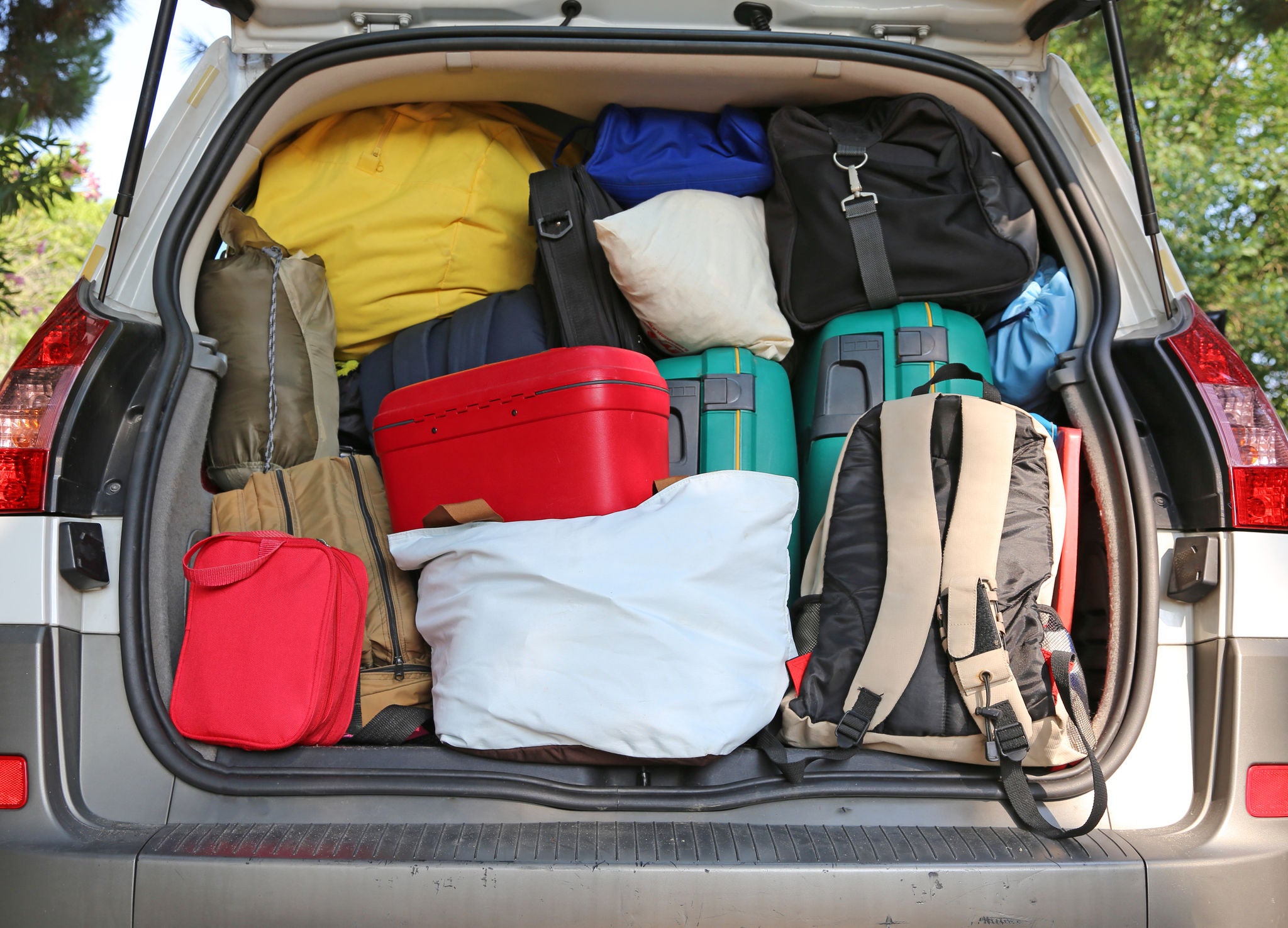
Some countries insist that you swap from summer to winter tyres as the cold weather approaches. But what are winter tyres? And why are they compulsory in some places but not others?
How are they made?
Winter tyres have a higher natural rubber content which gives them a softer structure. The interplay between the tyres’ rubber compound and the road changes as temperatures rise. This affects the tyres’ grip. Summer tyres harden below +7 degrees C while winter tyres’ specially developed compound guarantees flexibility, even below +7 degrees C.
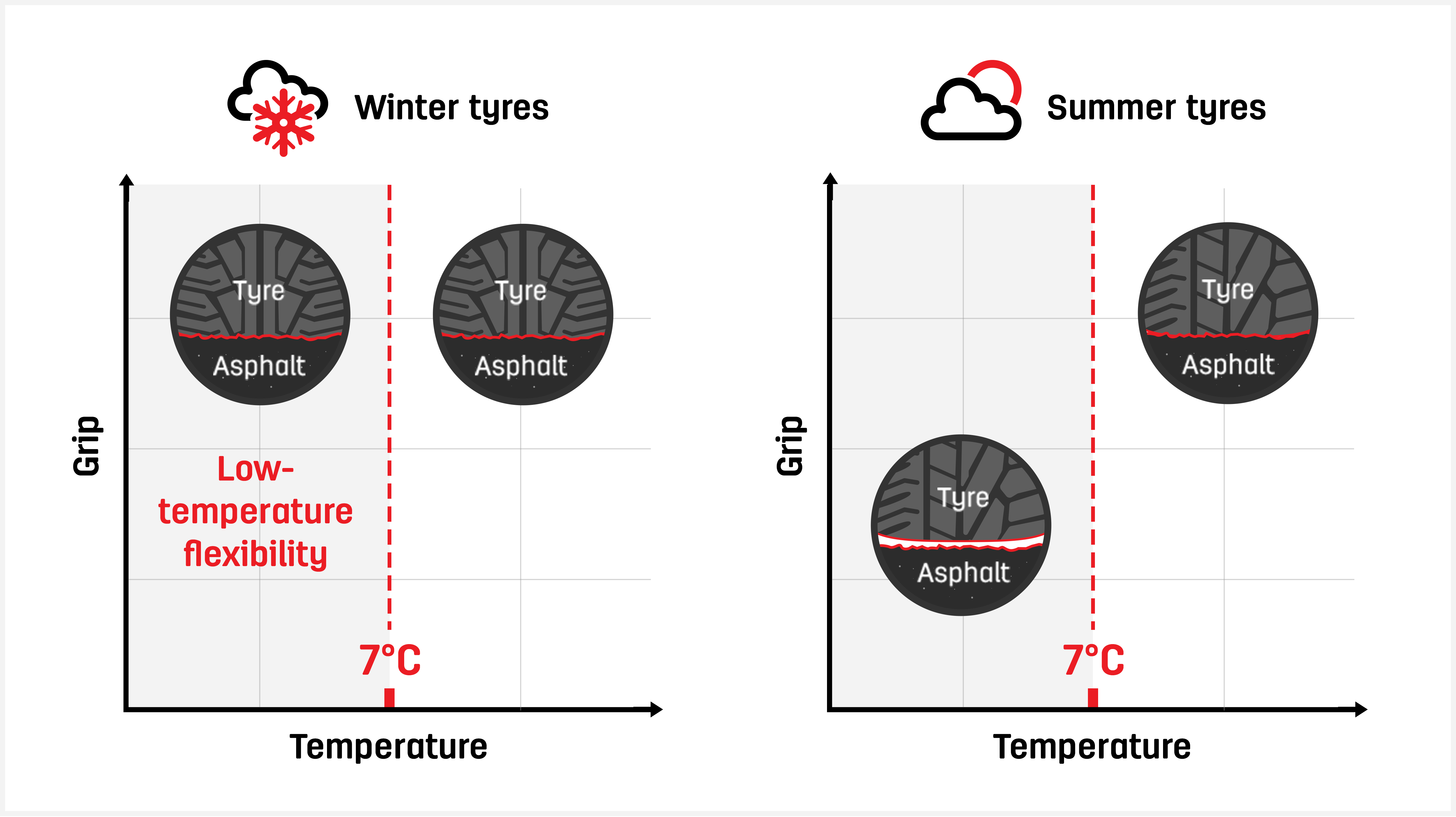
Winter tyres are needed if:
- You live or drive in a country where they are compulsory
- Your local temperatures frequently falls below +7 degrees C
- You live remotely and risk being cut off by heavy snowfall
- You are reliant on your vehicle in cold weather
How do winter tyres work?
Their name suggests that they’re snow tyres whereas actually they’re cold weather tyres, capable of performing optimally on rain, ice, snow and dry, but cold, roads. Their softer compound makes it easier for them to grip roads at colder temperatures than summer and all-season tyres which are made of a harder compound.
Their tiny grooves bite into snow, ice and sludge, dispersing water at a fast rate and ensuring better breaking and more traction. Meanwhile, deeper tread grooves gather and hold snow, to help with grip on packed snow, and help the tyres disperse water to reduce the risk of aquaplaning.
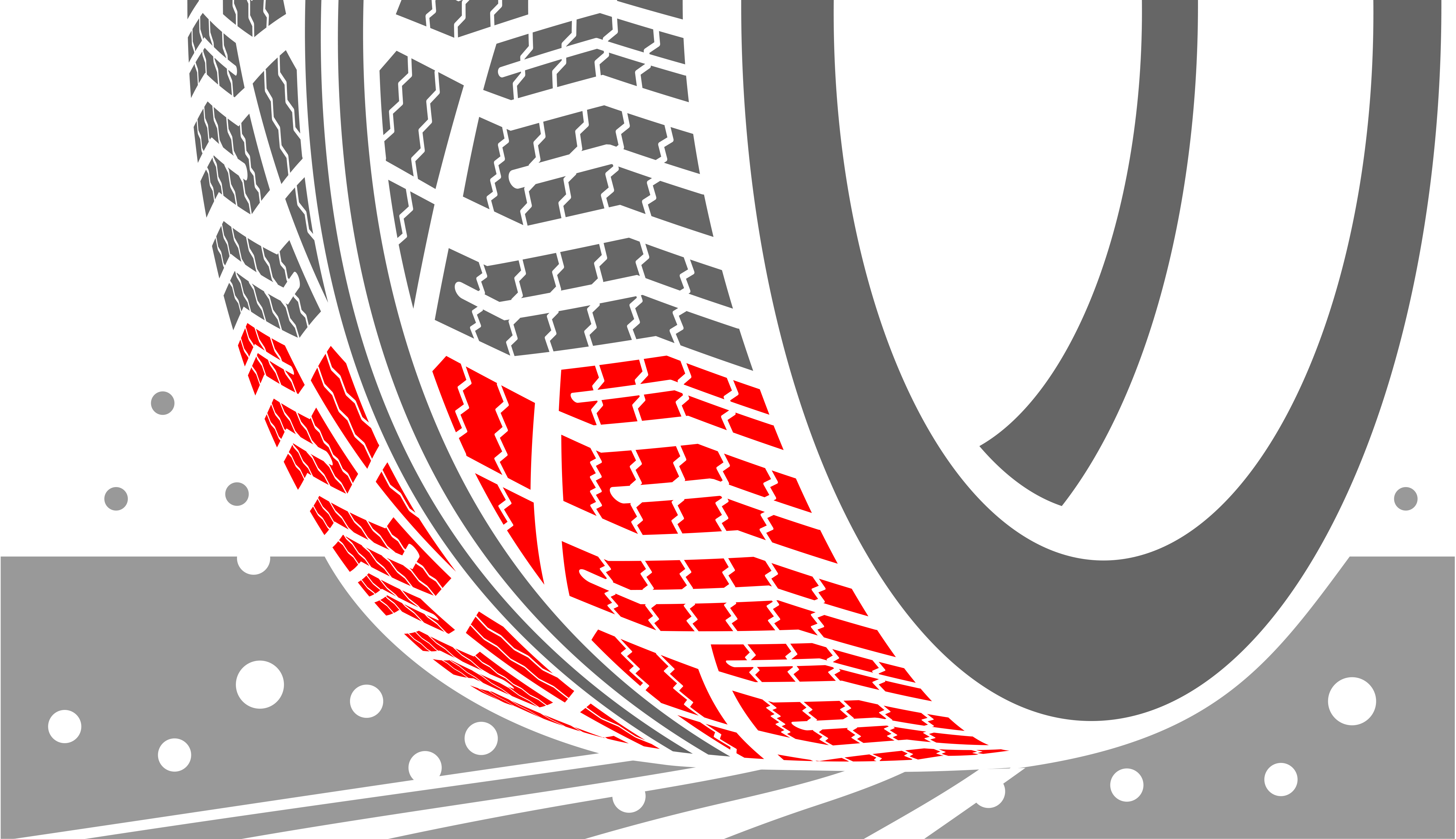 Tiny grooves bite into the snow, ice and sludge
Tiny grooves bite into the snow, ice and sludge
What are winter tyres’ benefits?
- Winter tyres are excellent at gripping cold roads, whether they’re wet, dry, snowy or icy.
- Nothing grips snow like snow. So, in the case of compact snow, winter tyres fill their tread grooves with snow and this grips the snow on the road.
- Their extra deep treads are capable of dispersing more water, helping to reduce aquaplaning and improve handling.
- Because they offer greater safety in the cold, and maintain their flexibility, they are harder wearing than summer tyres and are therefore more cost effective.
What are winter tyres’ disadvantages?
- Just as winter tyres are better in cold temperatures than summer tyres, summer tyres are better in warmer and more moderate conditions. Once temperatures rise above +7 degrees C you will need to be replace your winter tyres with summer tyres.
- Having a full set of winter tyres and a full set of summer tyres, including spares, can be costly – not only to buy but to store. In some countries, you have no option, while in others an all-season tyre may be suitable.
- Winter tyres are an excellent investment, if you live somewhere with extreme weather. For milder temperatures, or in countries where winter tyres are not compulsory, you may prefer to consider summer or all-weather tyres.
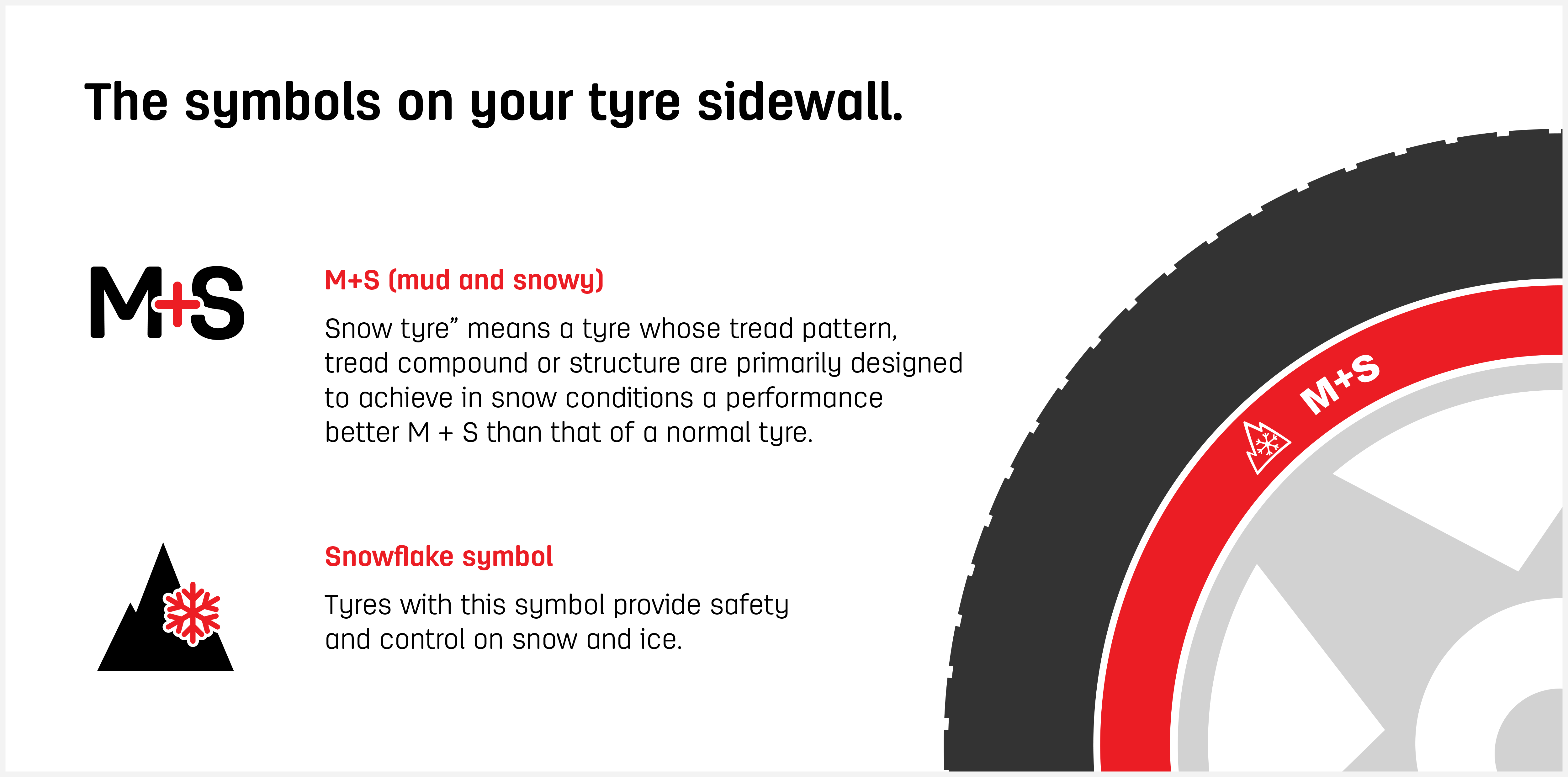 M+S and 3PMSF
M+S and 3PMSF
What do the symbols mean on winter tyres?
Winter tyres feature two symbols: M+S and a snowflake on a mountain:
M+S stands for mud and snow and it indicates that the tyre’s tread pattern and tread compound have been designed to offer superior handling and braking in mud and snow, compared to a summer tyre. The M+S symbol appears on all-season tyres as well as winter tyres.
The three-peak mountain snow flake (or 3PMSF) means that the tyres has passed a minimum required performance on snow, under EU Regulation 661/2009. This symbol only appears on winter tyres.
What is a maximum speed rating?
Tyres have different speed ratings, which need to be matched to the speed capabilities of the car. This is indicated by a letter on the tyre’s sidewall. A V, for example, means the tyre has a maximum speed of 240 km/h, assuming that it is correctly inflated and the car is not being overloaded.
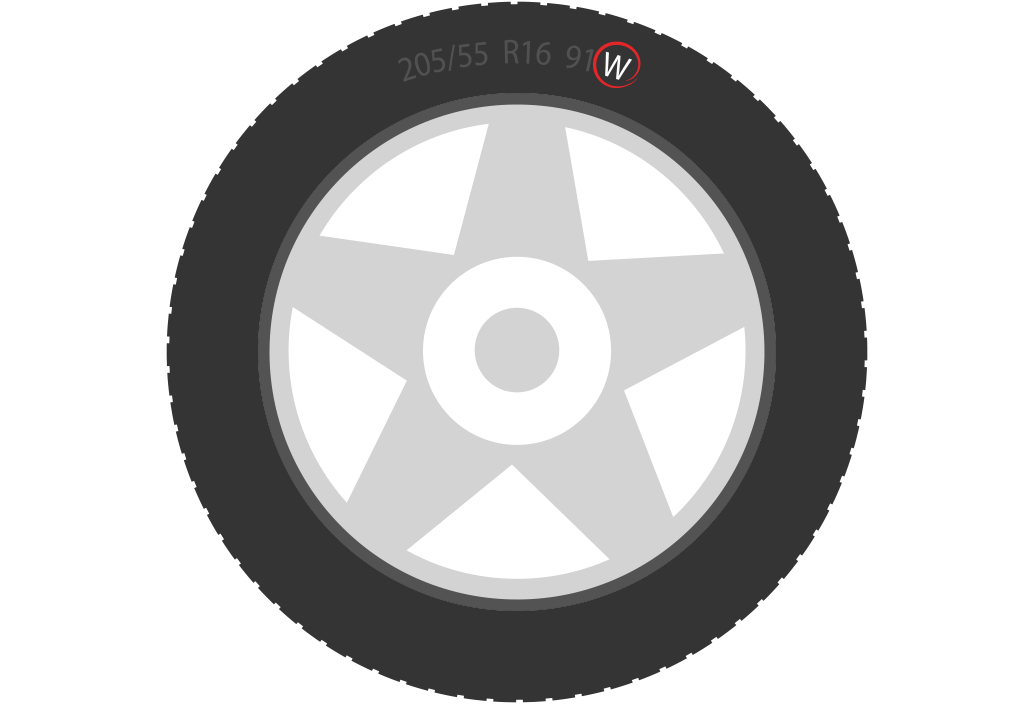
When it comes to winter tyres, you can fit one with a lower speed rating so long as you display a label, with your maximum speed limit clearly in the driver’s field of vision and you don’t exceed this speed.
Uniroyal winter tyres are available in speed categories Q (160 km/h), T (190 km/h), H (210 km/h) und V (240 km/h).
Winter tyre treads
Find out about the legislations in winter
There are three ways you can tell a winter tyre from a summer tyre by sight: winter tyre treads are deeper, they have a different tread pattern and they have additional markings on their side walls.
Side wall markings
To a novice, the easiest way to identify a winter tyre is to look for a symbol of three-peak mountain and snowflake (3PMSF) on the tyre wall as well as the letters M and S (mud and snow). The 3PSMF symbol indicates that the tyre has passed a minimum required performance on snow as laid out in EU Regulation 661/2009 on the Safety of Motor Vehicles.
This is a relatively new regulation, brought in in November 2012. The M + S symbol has been used by tyre manufacturers for years to differentiate their winter tyres from their summer ones.
Tread depth
Winter tyre treads are deeper which allows snow and slush to build up in the cavities. Strangely, snow is excellent for gripping onto snow so these deep treads really help with traction. For this reason, it’s important to replace winter tyres before the tread reaches its legal minimum of 1.6mm.
Winter tyres:
- Feature a symbol of three-peak mountain and snowflake
- Contain a high natural rubber content and therefore stay soft in cold temperatures
- Have deep grooves in their tread
- Use interlocking narrow grooves to break up snow, slush and ice
Tread pattern and compound
Winter tyre treads also have a distinctive pattern with numerous narrow slits (known as ‘sipes’) in the tread blocks. These interlock, biting into snow and ice to provide additional traction and improved braking.
A fourth differentiator, although not visible, is the tyre compound. Winter tyres contain more natural rubber than summer tyres so they stay soft in temperatures below +7 degrees C, making them more likely to grip in cold, wet, snowy and icy conditions.
 Tiny grooves bite into snow, ice and sludge
Tiny grooves bite into snow, ice and sludge
Traction on snow
What affects the grip of tyres and why it's important
Traction is defined as “the ability of a wheel or tyre to hold the ground without sliding”. This is particularly important when surfaces are slippery, like when driving on snow.
Why is traction important?
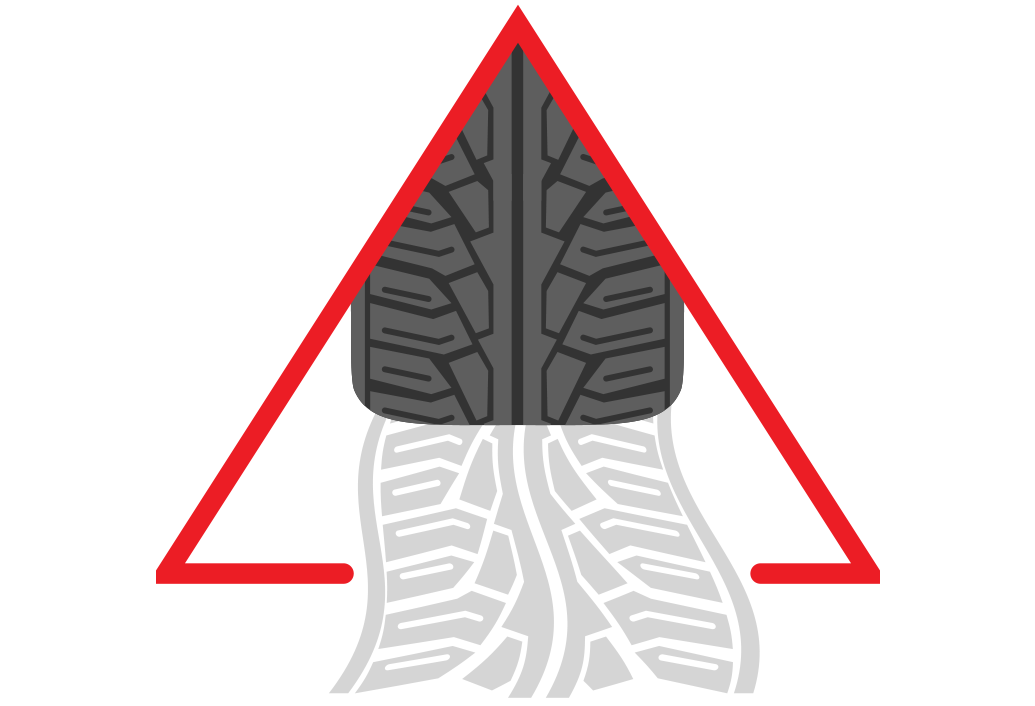
Your tyres are responsible for transferring your vehicle’s energy to the road surface and, in the process, moving the car forward. The better the traction, the better the grip.
Tyre traction is tested and measured on its ability to grip in both dry and wet conditions, as some treads and compounds excel in the dry while others perform better in wet and wintery conditions.
Traction is hardest to maintain in the winter when ice and snow make the road surface slippery and harder to grip.
What affects traction?
Traction is affected by a number of things, including the amount of tyre that’s in contact with the road surface. So, in simplistic terms, a wider tyre has a larger surface area and, in theory, has the greatest traction. But there are other influencing factors such as the tyre’s aspect ratio (the relationship of the width of a tyre to its height), its tread pattern, compound and tyre pressure.
Plus-sizing tyres (replacing the original tyres and wheels with a wheel that has a larger diameter and a tyre that has a shallower sidewall) affects the aspect ratio and increases the contact surface area. The same can be said of certain tread patterns that have wide surface blocks for greater grip. A softer compound and/or lower tyre pressure will, again, provide more contact.
What about traction on winter tyres?
Uniroyal’s MS plus 77 (for cars) and SnowMax 2 (for vans/trucks) are designed for winter. Their wide treads with wide, rigid shoulder blocks have additional sipes (narrow grooves) that allow the tyre to grip winter roads while expelling snow build up.
The MS plus 77 uses a specific silica compound which enables the tyre to interlock with the road surface, giving you more grip, while the SnowMax 2’s V-shaped directional tread pattern gives you more control and better handling on snow and ice.
For optimal safety, we recommend plus-sizing your tyres for winter.
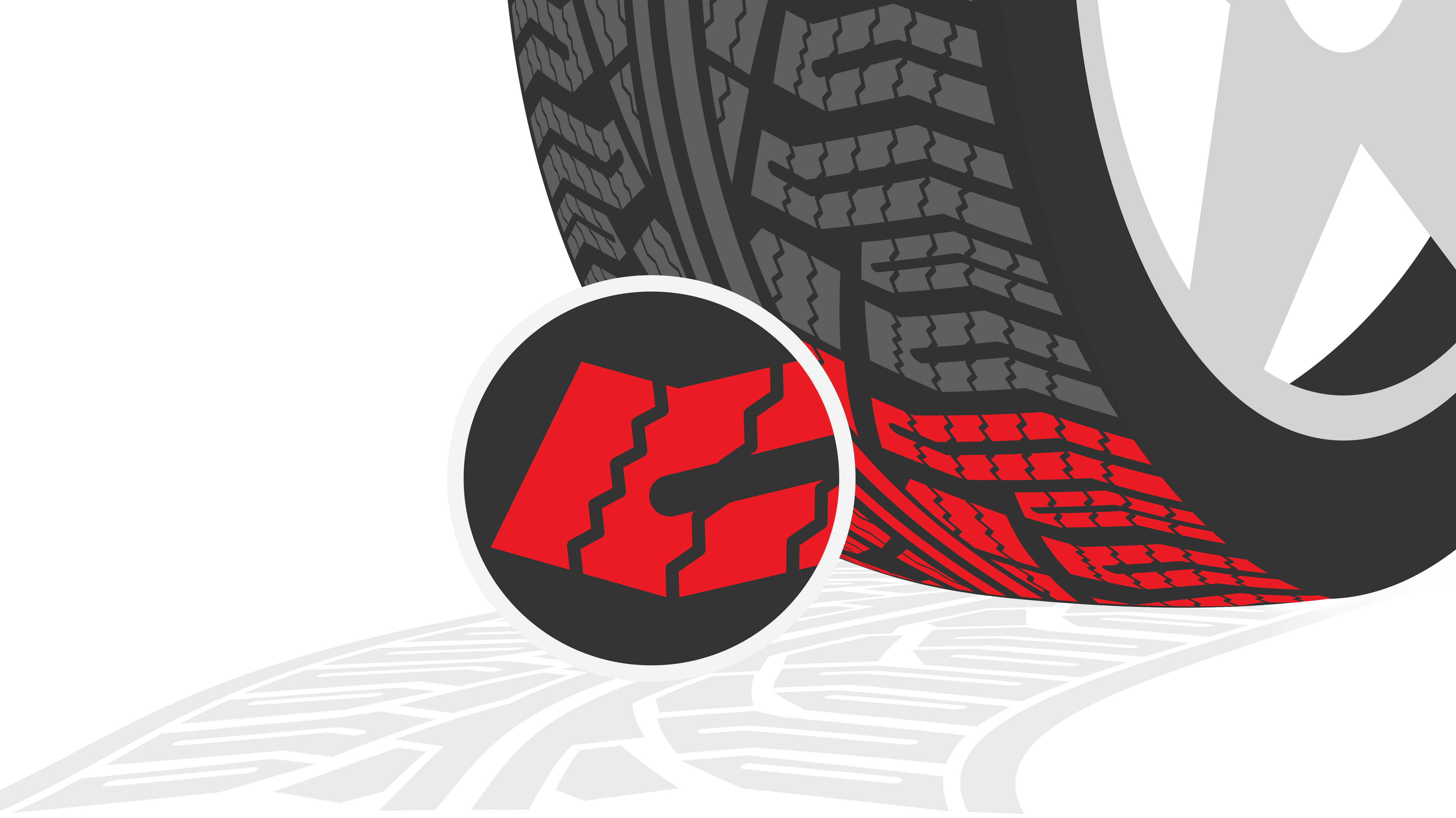
What gives winter tyres their grip?
Winter tyres’ compound contains more natural rubber than other tyres, so they stay flexible when temperatures fall below 7ºC. This rubber has a much lower glass transition temperature than summer or all-season tyres. Glass transition temperature refers to the temperature when a polymer, like a tyre, changes its properties and gets hard and brittle. It’s the reason why plastics left outside in winter crack so easily. So, while other tyres become hard in the cold, winter tyres stay supple resulting in more road contact, less snow build up and more traction.
The softer compound drastically reduces stopping distances while the deeper, narrower tread blocks flex easily to deflect minor imperfections on the road surface, again helping with grip.

What about tread depth and pattern?
Winter tyres, such as Uniroyal MS 77 Plus or Snow Max 2, have deeper tread depths which are designed to allow dry snow to pack into their treads. This packed snow actually helps improve traction and snow-on-snow friction in deep snow.
It all comes down to the fact that the freezing points and melting points of ice are related to both temperature and pressure. If you think of it like a snowball, you can put pressure on the snow and it creates an ice-bond. When a tyre holds a lot of snow, the same thing happens, making it good for traction when a tyre holds a lot of snow in its tread.
Meanwhile, sipes – tiny channels cut into the tread blocks - allow water, slush and thin snow to be broken up and dispersed. When the tyre rotates these sipes are pressed into the snow. As the tyre flexes, its sipes open up and grab snow and ice, biting them into tiny pieces.
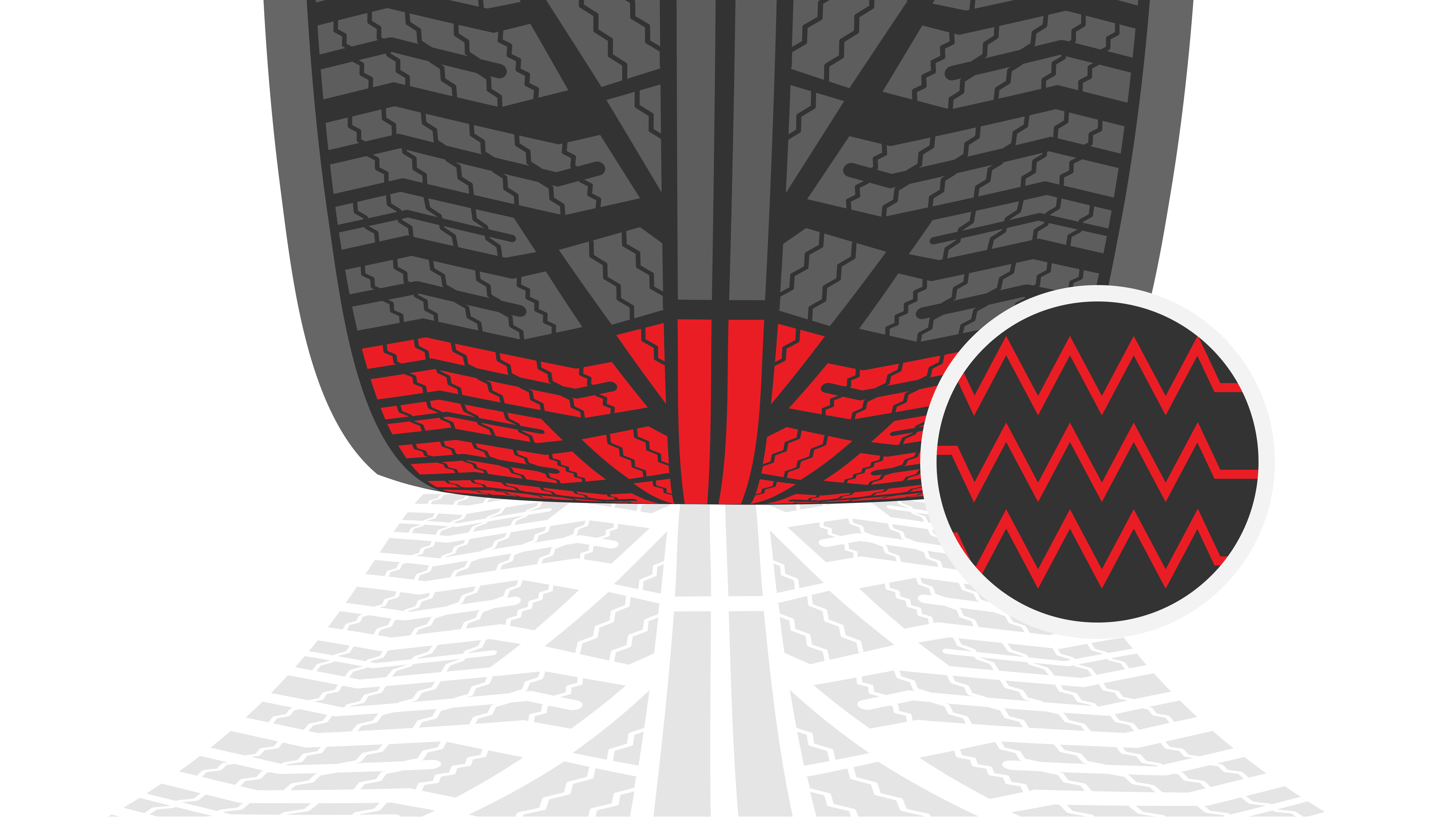
How to drive in snow
Tips for winter driving
Snow is great fun. Snowball fights, snowmen, sledging – it brings out the child in all of us. As adults, however, it does present some challenges, particularly when it comes to driving.
But, if you know how to drive in snow, many of these can be minimised. There are things you can do before you set out, as well as precautions you can take once you’re on the road. Knowing how to drive in snow will not only keep you safe but it will help you enjoy the drive.
Before you set out
- Think about what you’re wearing on your feet. The soles of your shoes should be clean and dry so that your feet don’t slip on the pedals.
- Check that your tyres are at their correct tyre pressure.
- Your tread depth is extremely important in the snow. Make sure you are compliant with the local laws in terms of winter/all-season tyres and/or snow chains. Our tyres begin life with 8mm of tread. While many local laws stipulate that they must be replaced at 1.6mm. Please consider that safe driving in wet and snowy weather conditions is affected by the tread depth, the pattern design and the rubber compound of the tread of your tyres. On wet or snow-covered roads braking performance will progressively decline with lower tread depths. On wet roads there is an additional increased risk of aquaplaning with fading tread depths.
- Therefore, check your tyres regularly, reduce your speed on wet and snowy roads and consider replacing your tyres in good time
- Clear any snowfall from your car roof. If you have to break suddenly, you do not want your view hampered by a clogged up windscreen.
- Make sure your screen wash bottle is topped up with sufficient additive.
- Check that your wiper blades are clean and in good condition and keep them switched off until after you’ve cleared your windscreen.
- Check that your wiper blades are clean and in good condition and keep them switched off until after you’ve cleared your windscreen.
- Pack a winter emergency kit (warm blankets, sand, snacks, a snow shovel etc.) in case of difficulties and think about carrying some snow chains or snow socks or even a bit of carpet to put under your drive wheels to help gain traction if you’re stuck. For more information, read our article what to do if you’re stuck in snow.
How to drive in snow
- If you’re using winter tyres, make sure you have more than 1.6mm tread depth which is the legal minimum tread depth.
- Check your tyres, screen wash and windscreen blades
- Clear snow and ice from the entire car
- Pack a winter emergency kit
- Drive slowly and avoid sudden movements
- Leave a big braking distance between you and the car in front
- Keep revs low and gears high
- Use your daytime running lights
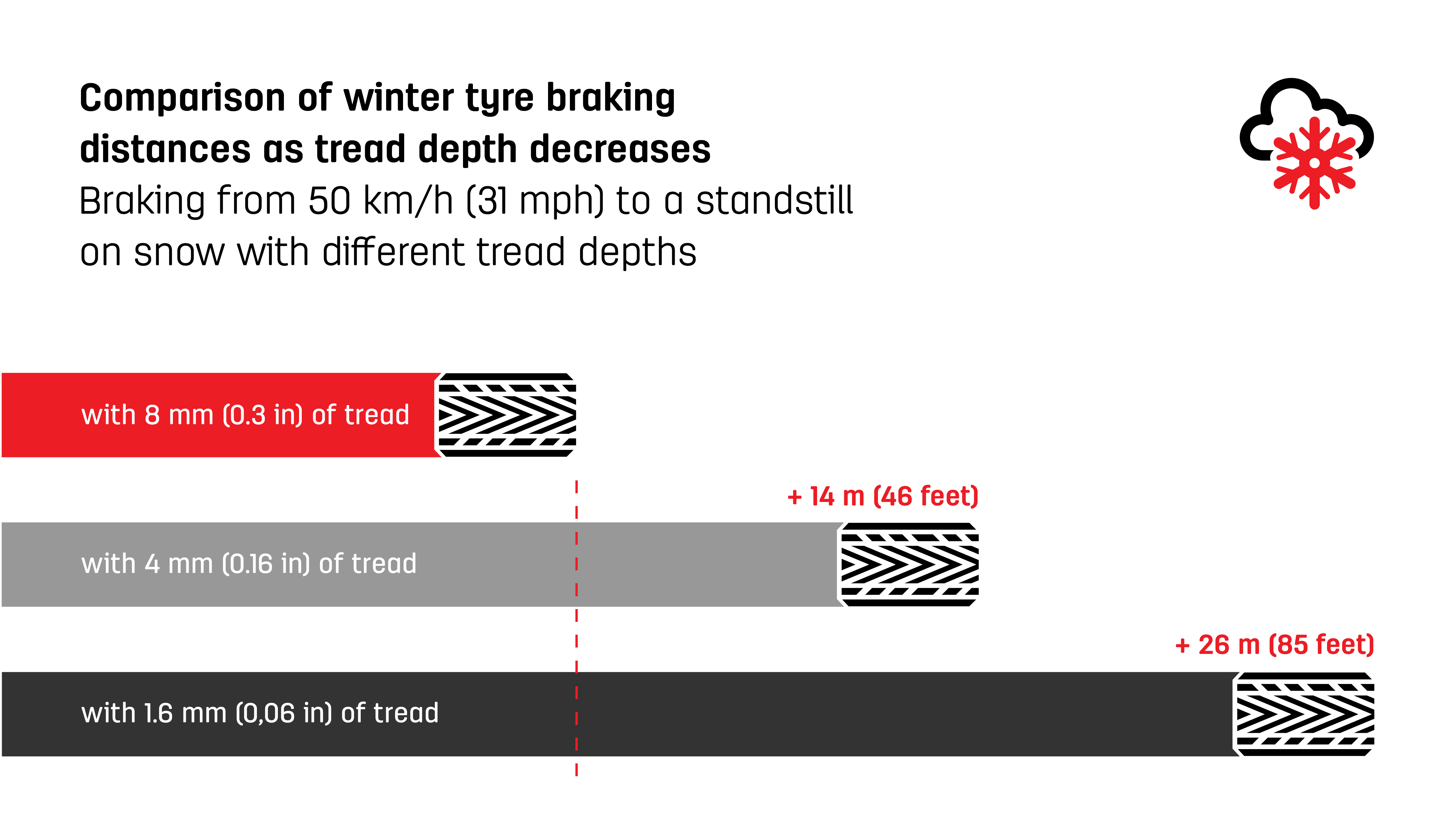 *Test conditions: 205/55 R16 91H , ContiWinterContactTM TS 830, VW Golf V, braking on snow, from 50km/h to 0 km/h (status: 2013). The graphics shown here are for illustration purposes only. The braking distance of a vehicle depends on its type, its age, the brakes and the tyres used, as well as the road surface (Source: Continental Reifen Deutschland GmbH). Tyre pressure in relation to the vehicle manufacturer's recommendation (Source: Continental Reifen Deutschland GmbH).
*Test conditions: 205/55 R16 91H , ContiWinterContactTM TS 830, VW Golf V, braking on snow, from 50km/h to 0 km/h (status: 2013). The graphics shown here are for illustration purposes only. The braking distance of a vehicle depends on its type, its age, the brakes and the tyres used, as well as the road surface (Source: Continental Reifen Deutschland GmbH). Tyre pressure in relation to the vehicle manufacturer's recommendation (Source: Continental Reifen Deutschland GmbH).
On the road
- Learning how to drive in snow often comes down to common sense. Even with the best winter tyres, you will need to allow for longer braking distances than you would on dry roads. So, keep a big distance between you and the car in front (up to 10x the normal distance recommended) and allow plenty of time to stop and steer.
- Avoid situations where you may end up wheel spinning as this could result in you getting stuck. Accelerate gently, using low revs and change up to a higher gear as soon as possible. Pulling off in second gear can also help to reduce wheel spin.
- Everything should be done smoothly and slowly – braking, steering, accelerating and even changing gear.
- If you have them, make sure you use your daytime running lights so it’s easier for other drivers to see you in the snow. This is mandatory is some European countries and recommended in others. Please check the local laws.
- If you’re following other vehicles on an ungritted road, it is better to drive on the fresh snow, rather than on their wheel tracks. The compacted snow will be icier than the fresh snow.
- If you skid, gently steer into the direction of the skid. If the back slides to the right, steer to the right. Keep your hands on the steering wheel and do not be tempted to slam on the brakes.
How to drive in fog
Tips for driving in fog
There are few things more frightening for drivers than to suddenly face a blanket of fog. Your vision becomes compromised and those around you become instantly invisible. The good is, you can learn how to drive in fog.
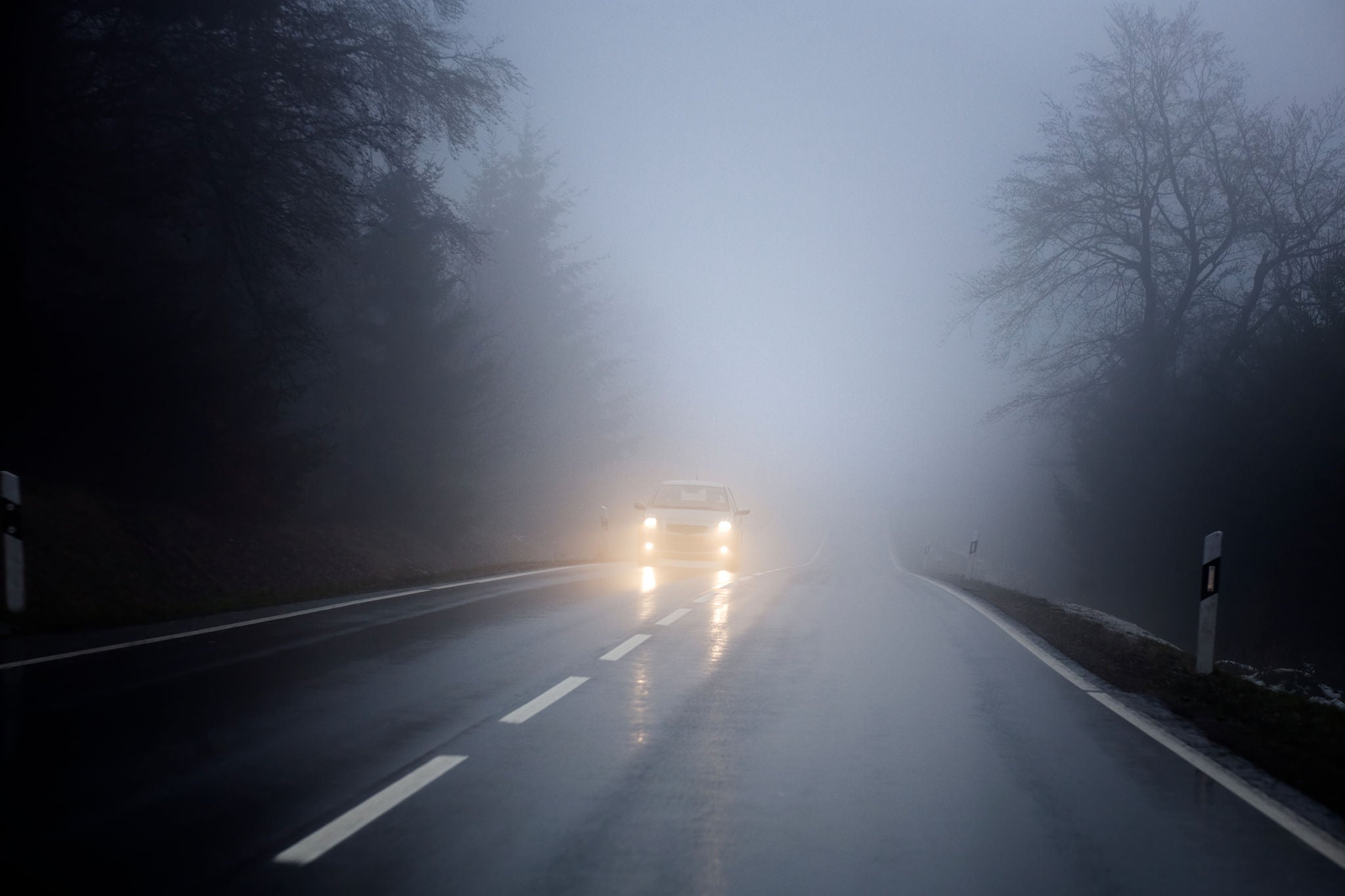
Before you set out
However good your driving, you can’t account for other people’s behaviour. But you can improve your chances of staying safe.
First of all, ask yourself “is this journey absolutely essential?” If you’re aware that fog is a risk, the safest thing to do is to avoid it altogether. Postpone your journey. The chances are that you’d get delayed in fog anyway, so is it really worth setting out?
Obviously that only applies if you have an inkling that fog is a threat. Quite often it can appear as if from nowhere – so you need to make sure you know how to drive in fog. That starts before you leave.
Your lights will take on huge importance when driving in mist and fog. So, before you set off, check that they’re all working and that their lenses are clean. Also, if you don’t know already, familiarise yourself with where your light switches are, including your fog lamp, and how you switch them on and off. Nowadays a lot of cars switch their lights on automatically when it gets dark but not necessarily in fog or mist. You therefore need to know how to control your lights manually.
Driving in fog checklist
- Check your lights before leaving
- Learn how to manually switch them on and off
- Use headlights with dipped beam
- Only use fog lights when visibility is very poor
- Avoid condensation inside your vehicle
- Drive slowly and steadily
- Keep a long distance between you and the car in front
- Be aware of fog turning to ice
On the road

When you hit a patch of fog you should switch your headlights on and keep your beam dipped. It can be very tempting to put your lights on to main beam but this is the wrong thing to do. Your lights will actually reflect on the fog and reduce, rather than improve, your visibility. Driving with your main beam on can also dazzle oncoming traffic.
The other misconception about driving in fog is that you should put your fog lights on at the first sign of mist. In fact, this can be a huge distraction to cars behind you. Don’t switch them on until visibility has dropped below 100m. A quick guide is to check if you can see the bumper of the car in front of you. If you can, keep your fog lights off. If you can’t, it’s time to switch them on. Some cars are fitted with front fog lights. If you’re going to use them, the same rules apply as rear fog lights.
Your fog lights will only work when your headlights are on dipped beam.
Remember, fog lamps emit an extremely strong light and they can be a hazard to other traffic if used inappropriately. Whenever the fog lifts – even temporarily – switch your fog lamps off immediately.
Pay attention to what’s happening inside your car. Fog can cause condensation which builds up on windows, further obscuring your view. Turn on your windscreen and rear windscreen heaters to demist your windows. It can be a good idea to open your windows slightly too. Not only will this help with the condensation but it will allow you to hear what’s going on around you and will help fill in some of the pieces that your lack of visibility has taken away. For the same reason, we suggest you turn your radio off.
Stopping distances become even more important in fog as drivers are likely to brake suddenly. Whilst it’s tempting to drive close to the car in front, to give yourself a sense of where you are, you risk colliding with them if they brake without warning. Equally, if you feel the car behind you is uncomfortably close, it is better to pull over and let them pass than risk your own safety.
Keep an eye on your speed. Without context, it can be easy for you to lose sight of how fast you are driving. Keep an even, steady speed – slower than usual but not dangerously slow – and be aware that stationary objects could appear in your path at any moment.
Finally, be aware of the temperature. Fog and mist will create a light damp layer on the road surface. If the temperature drops, this could form ice so be extra careful in foggy, cold weather.
Fitting and using snow chains
Alloy wheels in winter
Snow chains can be fitted to most cars, SUVs and trucks. They greatly improve traction on snow and ice and can be a temporary solution when fitted over summer tyres.
They are useful, for example, if you are driving to a ski resort where the local climate is colder and icier than your usual driving conditions. It’s important, however, to check what the legal requirements are where you plan to drive as some countries insist on winter tyres while others demand snow chains are used. Equally, as snow chains can cause damage to road surfaces, there may be minimum snow coverage limits.
If they are legally acceptable, you’ll need to know all about fitting and using snow chains.
Getting the right chains
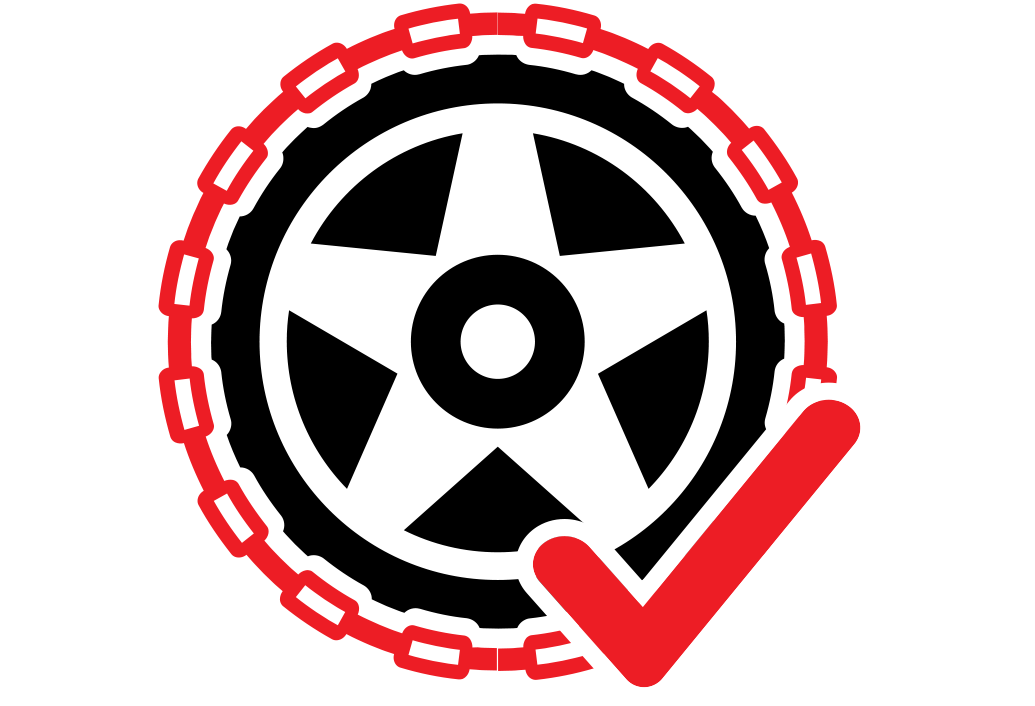
To begin, make sure that you’ve bought the right chains for your particular vehicle. You should be able to find details in your manufacturer’s handbook. Bear in mind that snow chains can be a problem on some cars. If yours has insufficient clearance between the tyre and the wheel arch/vehicle suspension you may need to consider a snow sock or find a manufacturer that can cater for your particular make and model.
Once you’re happy with the clearance at the back of the wheel and between the road surface and the wheel arch, you need to buy chains that are suitable for your tyre dimensions and vehicle weight/power.
Snow chains are sold in pairs and are usually fitted to the drive wheels. Again, check with your manufacturer’s handbook for advice. While some people consider two chains to be enough, two pair will be better.
Checklist for fitting and using snow chains
- Check your vehicle is suitable for snow chains
- Find out what the regulations are where you plan to use them
- Practice fitting them ahead of your journey
- Drive smoothly and slowly (max 30 mph)
- Check for damage regularly and clean and dry chains after use.
Fitting and using show chains
Don’t wait until you’re about to climb a snowy mountain road to try your snow chains out for the first time. Although they’re relatively easy to fit, practice is extremely important. Follow the instructions carefully on the packaging and contact the supplier if you have any questions.
In most cases you will need to turn off your car’s traction control/anti-skid once you’ve fitted your snow chains, but check your handbook for advice.
To prevent the chains from braking, avoid any sudden movements. Pull away gently and drive carefully and slowly, avoiding harsh acceleration and braking.
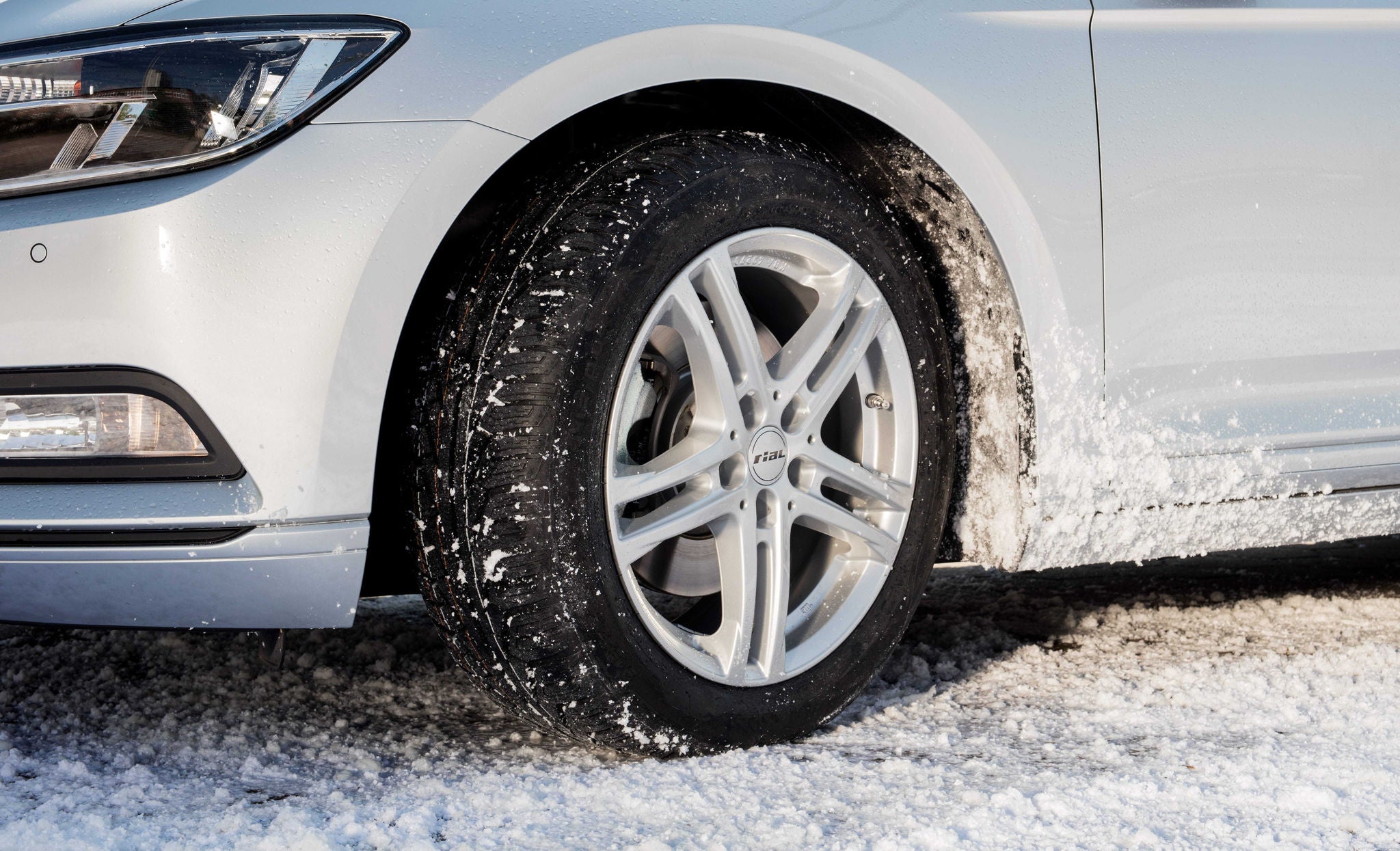
How to drive in icy conditions
Driving safely on icy roads
There’s a good reason why ice skating and ice hockey are so popular – it’s great fun to glide across ice at speed. But it’s not so fun when you’re in a car and the road is covered in ice.
There are many similarities between driving in snow and driving in ice. For example, in both situations you need to drive slowly and calmly, avoiding any sudden acceleration or braking. However, there are some additional considerations when you think about learning how to drive in icy conditions.
General precautions
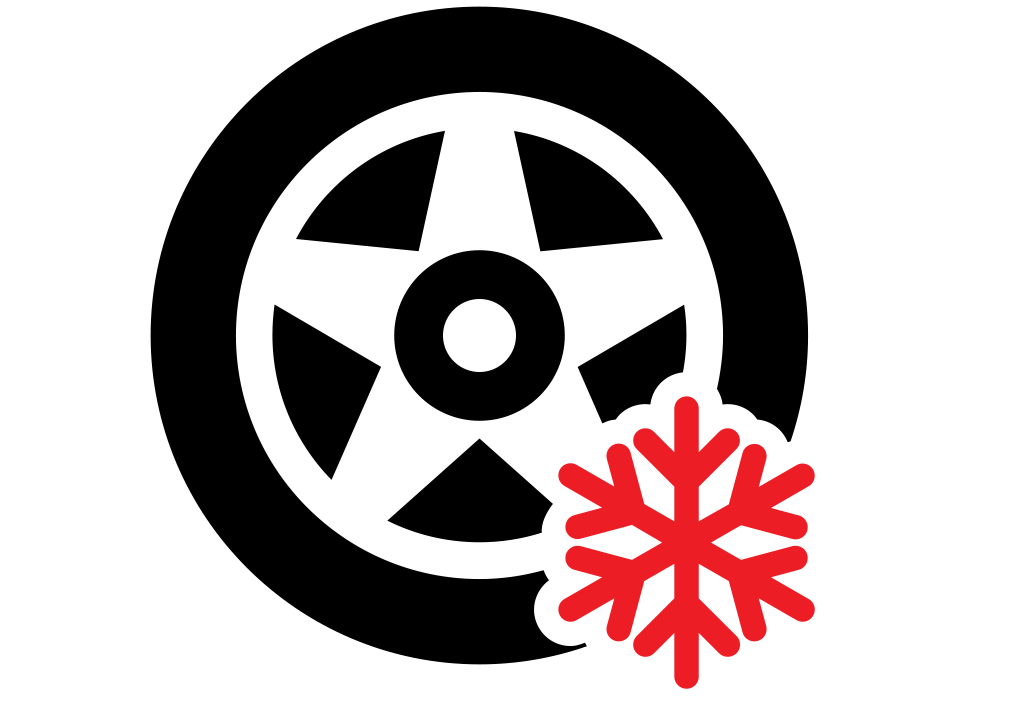
The first consideration is whether you need to go out by car at all. Icy roads can be extremely treacherous, so we advise you to question whether the journey is really worth the financial and emotional cost of a potential accident.
Listen to the radio. Weather forecasters will often tell you if there are specific danger zones and this may help you decide whether or not to venture out.
You may already be on the road and are unsure whether ice is going to be a problem.
One of the major differences between snow and ice is that snow is easy to spot. Black ice, on the other hand, blends so well into the colouring of the road you often don’t know it’s there until it’s too late. It’s a good idea to use your car thermometer as a guide. If it registers the air’s ambient temperature as being close to freezing, you need to be extra careful.
Another way of detecting ice is to watch the other drivers around you. If you spot them sliding, or you notice cars that have veered off the road, you have probably driven into an icy area.
If you find yourself in a situation that makes you nervous, pull over and either wait for the temperatures to rise or find an alternative mode of transport.
How to drive in icy conditions
- Keep an eye on ambient temperature so you are prepared for icy conditions
- Keep an eye on other drivers to see if they are being affected by ice
- Listen to weather forecasts and avoid areas of concern
- Drive slowly and carefully
- Extend the distance between you and the car in front
- If you do skid, steer in the same direction as the rear of your car is moving.
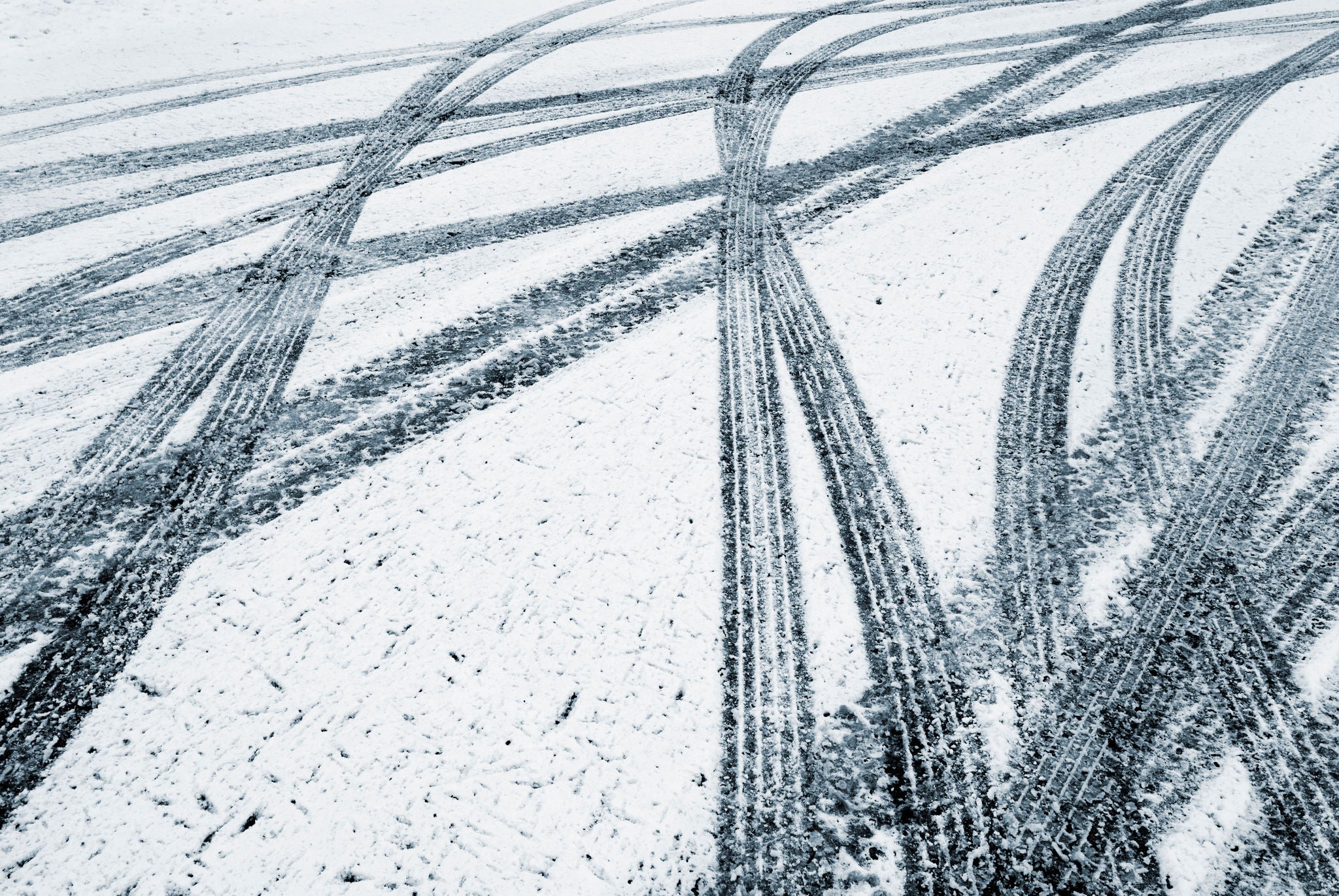
Driving tips
If you do decide to drive, here are some driving tips to help you get safely from A to B.
When driving in icy conditions, you need to leave as much space as possible between you and the car in front. This could be up to ten times more than you would when driving on dry roads. So, if it normally takes you 23 metres to stop when driving on a normal sunny day at 30mph, it would take at least 230 metres to stop at the same speed on ice.
If you do hit a patch of ice, and find yourself skidding, steer in the same direction as the rear of your car is sliding. If the rear of your car is sliding in the same direction as your right shoulder, turn your steering wheel to the right. If the rear is sliding in the same direction as your left shoulder, steer to the left. Never take your hands off the steering wheel and don’t stamp your foot on the brake as this could cause your wheels to lock up.
Icy conditions can be accompanied by hail storms. These can limit your visibility so, if safe to do so, it’s a good idea to pull off the road, ideally stopping somewhere that’s covered, such as under a bridge. Direct your car towards the hail, so your windscreen withstands the majority of the force and not your side or rear windows. Your windscreen is capable of protecting you more than other windows. Wait for the hail to pass before setting off again.
It’s always a good idea to carry a charged mobile phone with you so you can notify people if you’ve broken down.
Related Topics
-
 2023/09/20Tyre expertiseRead more
2023/09/20Tyre expertiseRead more -
 2023/09/20Safety & Driving TipsRead more
2023/09/20Safety & Driving TipsRead more -
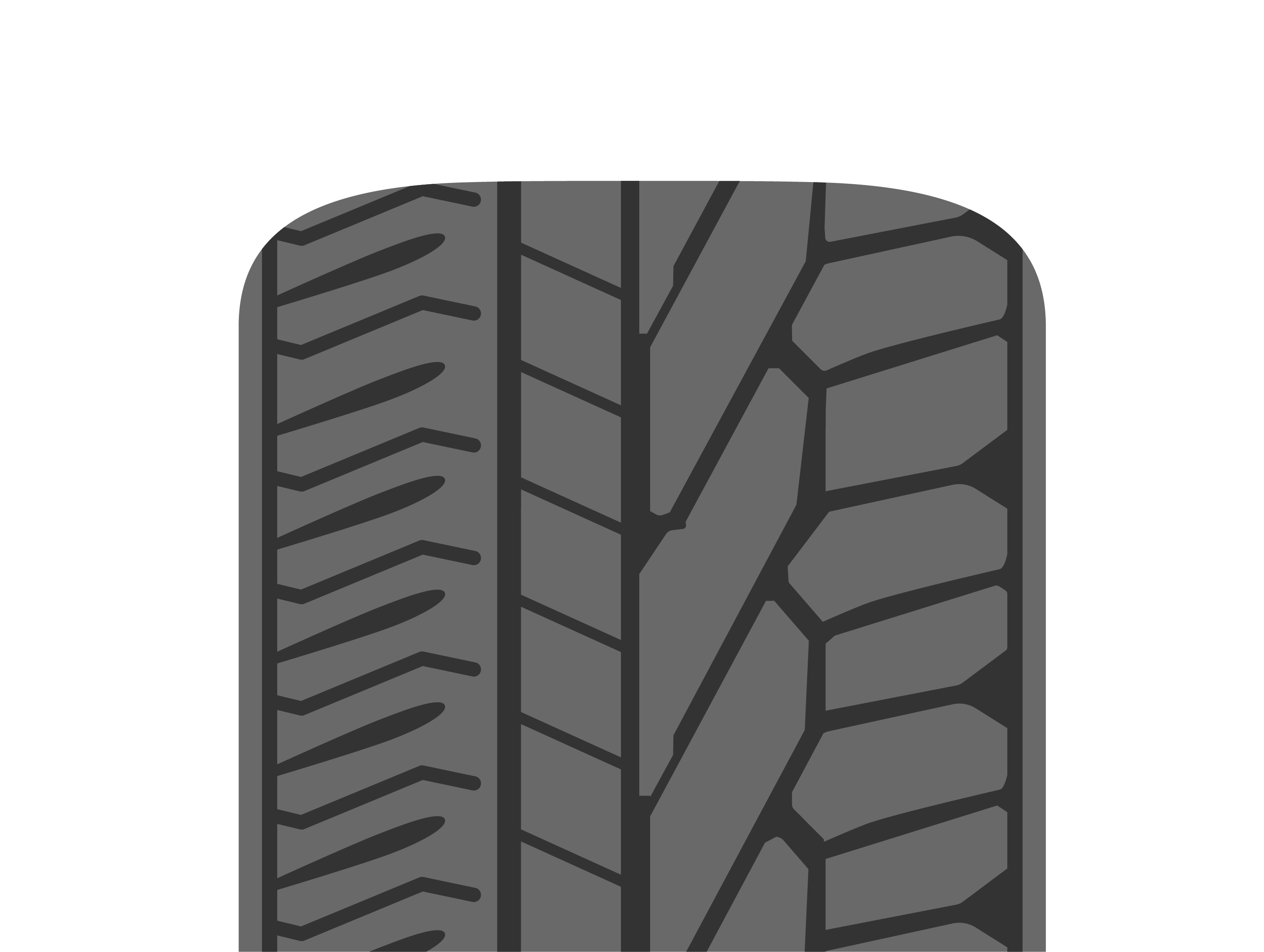 2023/09/20Tyre materialRead more
2023/09/20Tyre materialRead more